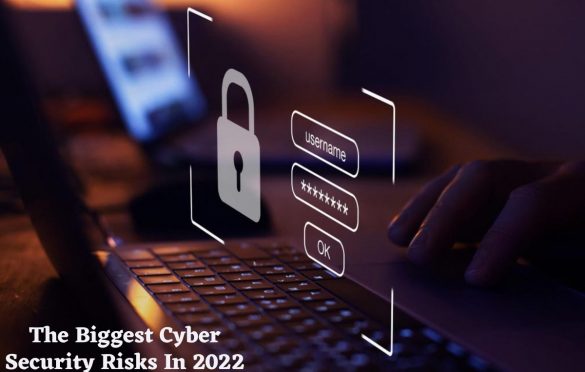
The Biggest Cyber Security Risks In 2022
Cybersecurity has been a widespread priority since the dot com boom introduced the world of online. When the digital industry was new, cyber threats were comparatively lower.
But, as we are moving towards a digitally supported world, cybersecurity risks will only increase and by many of the people are getting masters in cybersecurity. The digitization of the industry has escalated after the COVID-19 pandemic. As a result, more and more businesses started setting up their shops online.
With more business online, it gave more opportunity to the fraudulent activist to take advantage of businesses being digital insecure. As we accept digitalization, we are expected to see cyber security threats become more sophisticated.
Experts predict that global cybercrime will reach $10 Trillion by 2025. The only way to protect yourself from cyber threats is to protect yourself online proactively. For instance, if you are online, use VPN and Antivirus software tools to keep viruses and prying eyes away.
If you are reading this article without any of these tools, you are exposed to many cyber threats. Visit The PirateBay, download this software, and protect yourself online.
Table of Contents
Cyber Security Risks In 2022
While 2020 and 2021 have been exceptional years for cyber attacks, there is little indication that things will come back to normal. Cyber threat actors have tried new tactics, found them successful, and have added to their arsenal.
In 2021, several cyber attacks made national headlines, and the names of attacks became household names as the impact of the attack was felt far beyond their target companies. As a result, the modern threat landscape is composed of bigger, flashier, and high-impact attacks.
Below we have listed the cyber security threats you need to be aware of in 2022.
1. Social Engineering
In 2022, we are likely to see an evolved version of social engineering attacks. Attackers will come up with different strategies, technologies, and tactics to impersonate email and phishing approaches.
For instance, cryptocurrency-related attacks have increased 2 fold in the last year and are likely to remain a prominent threat as Cryptocurrencies take steps to grow.
2. Poor Cyber Hygiene
Thanks to the COVID-19 pandemic, people were introduced to a new way of working – Remote Working.
While remote working has made it possible for the industry to keep functioning, it has certainly opened a path for hackers to enter the home network protected by weak passwords.
Poor cyber hygiene during remote work has exposed businesses to danger and cyber security threats.
3. Cloud Vulnerabilities
New development in cloud security is based on Zero Trust Cloud Security infrastructure. The zero trust network has been designed in a way that it is already considered compromised. That means, at every step, verification is required.
This style of security gained its popularity in 2021, when cyber attacks were on the rise. The possibility is that the same trend will continue in 2022.
4. Internet Of Things
People are getting smarter and so do the devices around them. Researchers predict that the total number of smart devices present in the world will double by the end of 2025.
While it is good that our life is becoming more digitized, the downside is that we are creating a wider network that can be used to breach personal and corporate data.
5. Ransomware
Ransomware is only becoming more sophisticated, easily available, and most efficient for hackers over time. In fact, hackers now subscribe to Ransomware as a service, which allows them access to ready-made tools to execute attacks.
The rise of RaaS means that ransomware attacks have now become more affordable. Unfortunately, this means that from here on, ransomware attacks will only increase.
Staying On Top Of It All
Staying aware of all the new cybersecurity threats can be an overwhelming task. With millions of attackers working around the clock to create different attack strategies, even the most fortified cybersecurity system can’t offer guaranteed protection.
That is why it is important that you supplement your protection with an additional layer of insurance. Insurance will assure you that even after falling victim to multiple successful attacks, the damages won’t derail your organization.

